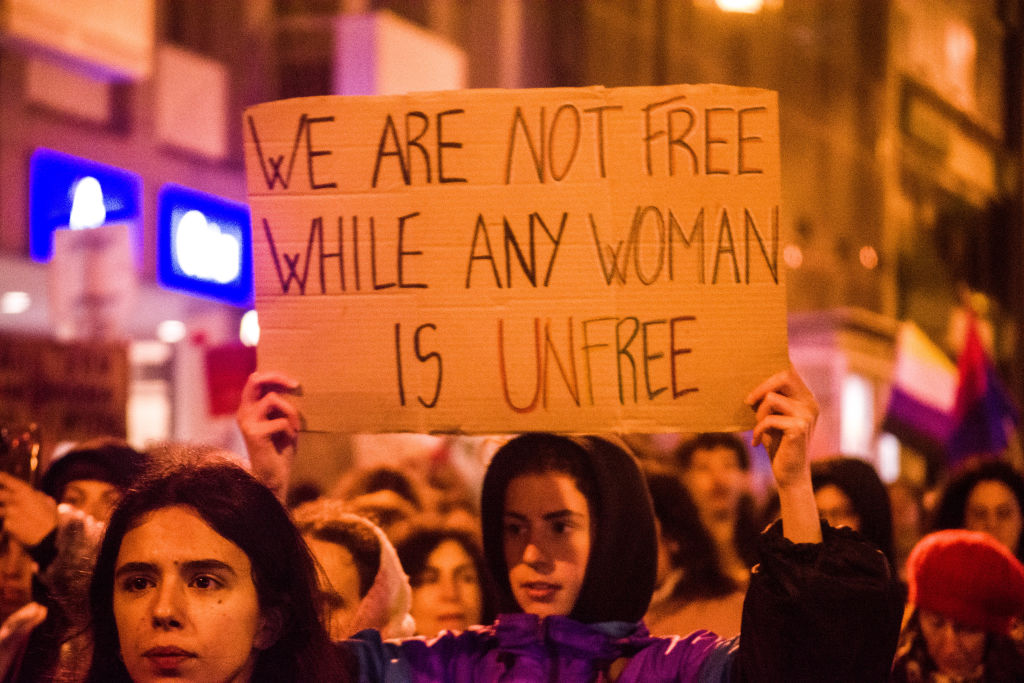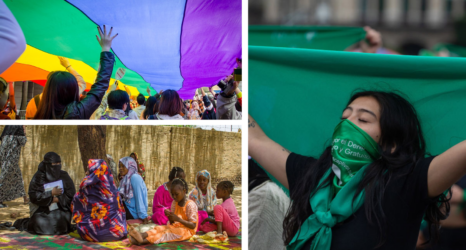When it comes to the best countries to be a woman, the U.S. ranks 37th globally—thanks largely to two indicators: maternal mortality and political violence.

The status of women in the United States is declining: The U.S. ranks 37th globally in terms of the best countries to be a woman, compared to its ranking of 26th in 2017 on the Women, Peace and Security (WPS) Index.
What’s Driving the Decline?
Between 2017 and 2023, the U.S. saw a decline in its score of about 2.5 percent on the WPS Index, while on average, countries around the world have improved by about 3 percent.
The Index report, published by the Georgetown Institute for Women, Peace and Security (GIWPS) and the Peace Research Institute of Oslo (PRIO), uses 13 indicators of women’s inclusion, justice and security to rank and score 177 countries on women’s status.
Two indicators of women’s status have significantly worsened in the United States: maternal mortality and political violence against women.
Since 2017, maternal mortality has risen from 19 to 21 deaths per 100,000 live births. The U.S. has by far the highest levels of maternal mortality among developed countries, with levels nearly twice as high as its closest counterpart, Portugal.
Rising levels in the U.S. reflect worsening inequalities as maternal deaths accelerate faster for women of color.
- The CDC estimates that as of 2021, maternal mortality rates for Black women soared to nearly 70 deaths per 100,000 live births, while Native American women are more than twice as likely as white women to die from conditions caused or exacerbated by pregnancy.
- Women of color frequently experience systemic racism and biases in healthcare access and are also more likely to face financial barriers to quality care, resulting in higher risks of maternal death.
Political violence against women, or attacks perpetrated against women as part of a political agenda, have also significantly increased in the U.S. since 2017. Taking on leadership roles has become more dangerous, as women politicians are the frequent targets of violence and harassment. Comparable data at the country level is only available for physical forms of political violence, which doesn’t account for the rapidly escalating threats of online violence and harassment facing women, especially by extremist groups.
Recent data from the Pew Research Center revealed that while roughly equal shares of men and women in the U.S. have experienced online violence, women report more harassment based on their gender: 47 percent compared to 18 percent for men.
In addition, women also report higher rates of sexual harassment at 16 percent compared to 5 percent for men, and stalking at 13 percent compared to 9 percent for men. All forms of political violence seek to silence women’s voices and marginalize women away from positions of power, undermining democratic strength and integrity.
Areas of Progress and Looking Ahead
Despite these areas of concern, other aspects of women’s status in the U.S. are showing improvement.
The share of women with access to their own bank account has risen from 93 to 97 percent since 2017, and women’s representation in Congress has jumped from 20 to 28 percent.
Overall, however, areas of decline have outweighed areas of improvement, highlighting the urgent need to address challenges facing women, especially concerning women’s health and safety.
The WPS Index shows that countries where women are doing well tend to be more prosperous, peaceful, democratic and better prepared to respond to the impacts of climate change—prioritizing women’s well-being in the U.S. advances the well-being of everyone in society.
With the 2024 election quickly approaching, it is more important than ever to elect leaders at all levels who will prioritize investments in women.
Up next:
U.S. democracy is at a dangerous inflection point—from the demise of abortion rights, to a lack of pay equity and parental leave, to skyrocketing maternal mortality, and attacks on trans health. Left unchecked, these crises will lead to wider gaps in political participation and representation. For 50 years, Ms. has been forging feminist journalism—reporting, rebelling and truth-telling from the front-lines, championing the Equal Rights Amendment, and centering the stories of those most impacted. With all that’s at stake for equality, we are redoubling our commitment for the next 50 years. In turn, we need your help, Support Ms. today with a donation—any amount that is meaningful to you. For as little as $5 each month, you’ll receive the print magazine along with our e-newsletters, action alerts, and invitations to Ms. Studios events and podcasts. We are grateful for your loyalty and ferocity.





